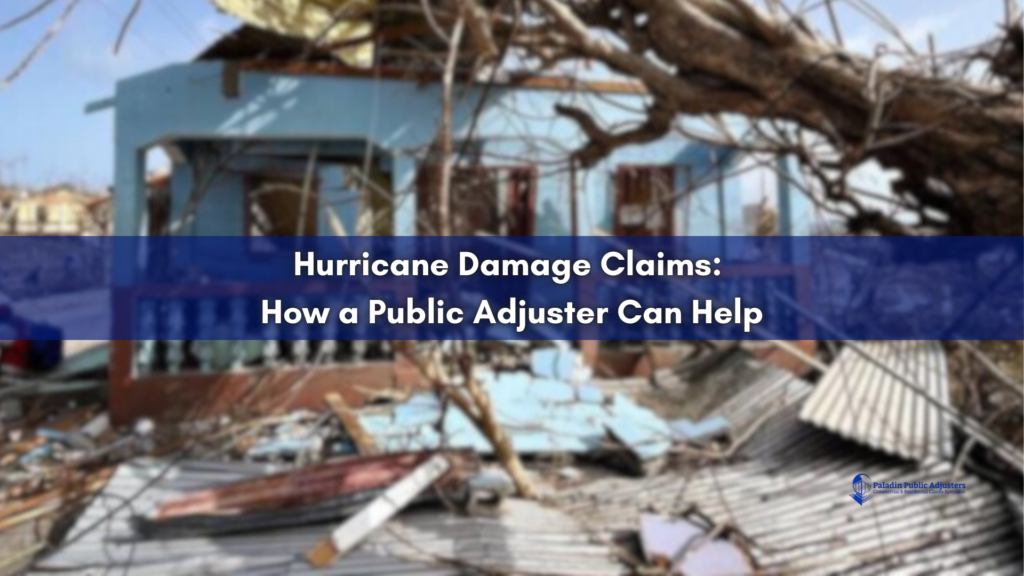
Hurricane Damage Claims: How Adjusters Help
Property damage can occur due to various reasons, such as natural disasters, accidents, or accidents within the property. While it’s crucial to get your property repaired or replaced as soon as possible, it’s equally important to ensure you are compensated fairly by your insurance company. Poor documentation of property damage can leave you with an underpaid claim or cause your claim to be delayed significantly. In this article, we will explore the best ways to document damage to secure a faster, higher payout.
The Importance of Proper Documentation for Property Claims

When you file an hurricane insurance claim, the evidence you present determines how much compensation you will receive. Insurers rely on the documentation to assess the value of your claim. Without proper documentation, they may undervalue your damages or, worse, deny your claim altogether.
Property damage documentation plays an important role in ensuring that your claim is processed smoothly and efficiently. The more detailed and organized your records are, the more likely it is that you’ll receive a fair payout without unnecessary delays. While it’s tempting to focus only on major damage, smaller items and hidden damages can add up and impact the overall claim.
Steps for Documenting Property Damage
- Photographs and Videos: A Visual Record One of the most crucial steps in documenting property damage is to capture it visually. Photographs and videos serve as the primary evidence for your claim. To ensure your images and videos are as effective as possible, here are some key tips:
- Take photos and videos of both the exterior and interior of the property. Don’t forget to capture every room and all affected areas.
- Include wide-angle shots and close-ups to give a complete view of the damage. When possible, show the size and depth of the damage by using a measuring tape or a reference object.
- Document items that are damaged or destroyed. Take detailed photos of items such as furniture, electronics, or appliances.
- While photos are important, videos allow you to capture more context and can show how far-reaching the damage is.
- Create a Detailed Inventory List Along with visual documentation, it’s vital to create a thorough inventory of all damaged or destroyed items. This list should include:
- A description of the item (furniture, electronics, artwork, etc.).
- The age of the item and the condition before the damage.
- The replacement value of the item (consider using receipts, purchase records, or online prices for verification).
- For valuable items, like electronics, jewelry, or collectibles, having proof of purchase and product serial numbers will help establish their value.
- Structural Damage DocumentationProperty insurance typically covers not only personal belongings but also structural damage to your home or business. Documenting structural damage is just as important as documenting personal property. This includes:
- Roof damage, broken windows, doors, and walls.
- Foundation cracks or structural weakening due to the incident.
- Signs of water or smoke damage that may require long-term repair.
- Structural damage often requires an expert’s opinion to assess the full extent of the impact. Having detailed photos and video footage, as well as expert estimates, will help support your claim.
- Document Temporary Repairs If you have made any temporary repairs to prevent further damage (such as boarding up windows or placing a tarp over a leaking roof), document these actions as well. Keep receipts for any materials purchased and take pictures of the temporary repairs. This shows that you’ve taken proactive steps to protect your property and will help demonstrate the urgency of the repairs needed.
- Obtain Professional Estimates Depending on the extent of the damage, it may be beneficial to get estimates from contractors or repair professionals. Their expert opinions can help verify the cost of repairs or replacement and serve as additional support for your claim. In some cases, insurance adjusters may downplay the cost of repairs or underestimate damages, so professional estimates can provide an objective perspective that helps justify your claim.
The Role of a Public Claims Adjuster
A public claims adjuster can make a huge difference in the claims process. Unlike an insurance company’s adjuster, who works for the insurer, a public adjuster works solely for you, the policyholder. A public adjuster will ensure that your damages are fully documented and that your claim is processed correctly. Their expertise can be especially valuable in complicated cases or when the damages are extensive.
Public adjusters assist with:
- Assessing All Types of Damages: They will identify damages that might not be immediately obvious, such as water damage or hidden mold, which can affect the overall payout.
- Maximizing Your Payout: Public adjusters are skilled negotiators who work to ensure you get the highest possible compensation for your claim. They know the ins and outs of the insurance process and can help push your claim through the system quickly.
- Managing the Paperwork: The paperwork involved in filing a claim can be overwhelming, especially if you have significant damage to the document. A public adjuster will help organize and submit all necessary documentation, ensuring everything is in order.
Common Documentation Mistakes to Avoid
- Underreporting the Damage: Many people focus only on visible damage, such as structural issues or large items. However, smaller, hidden damages (like water stains or damaged wiring) can significantly impact your claim. It’s essential to document everything, including things you may think aren’t worth mentioning.
- Not Keeping Copies of Everything: Always keep copies of your documentation, including photos, receipts, and any estimates you receive. If the insurance company loses or denies part of your claim, having these copies will ensure that you are protected.
- Failing to Document Temporary Repairs: If you make any temporary repairs to prevent further damage, document everything thoroughly. This can show your insurer that you acted responsibly to protect your property.
- Delaying the Documentation: The sooner you document the damage, the better. If you wait too long, the damage might not be as apparent, and some issues may worsen, leading to a reduced payout or disputes with your insurer.
Taking Charge of Your Claim
Documenting property damage isn’t just a task—it’s a vital step in ensuring that your hurricane insurance claim is processed smoothly and that you receive a fair payout. Thorough documentation provides the necessary evidence to back up your claim, helping to prevent delays or underpayment. If the process feels overwhelming, hiring a public claims adjuster can make the difference between an efficient, stress-free claims experience and a prolonged battle with your insurance company.

Ensuring a Fair and Timely Claim
Proper documentation is key to securing the compensation you deserve. Take the time to thoroughly document every detail of your property damage, and seek professional assistance when necessary. A well-prepared claim is not only likely to be processed faster but also more likely to result in a payout that reflects the true cost of your losses. Don’t let poor documentation hold you back, ensure your claim is as strong as possible for the best outcome.

